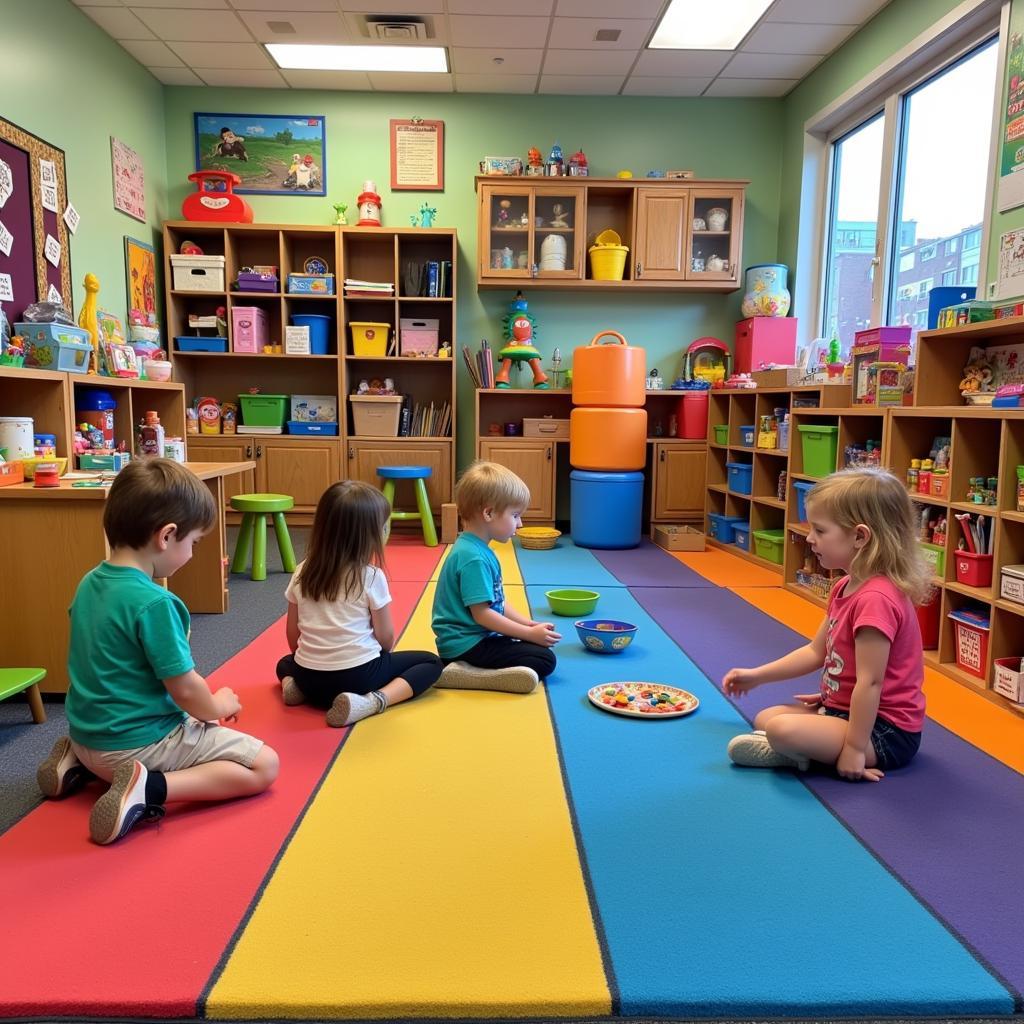“Children are like buds on a branch, knowing how to eat, sleep, and learn is being good.” Preschool play areas are the solid “tree” for these “buds” to develop comprehensively. It’s not just a simple playground but also an important educational environment, helping children explore the world around them and develop essential skills. Learn more about preschool play areas.
My child is 3 years old this year, and every time she goes to school, she excitedly invites her friends to the play area. Watching her engrossed in games, I suddenly realized the importance of designing play areas that are both safe and stimulate children’s creativity. This motivated me to learn more about “preschool play areas” to share with parents.
The Importance of Preschool Play Areas
Preschool play areas are considered the “heart” of the classroom, a place where children are free to express themselves. Through play activities, children practice communication, cooperation, problem-solving skills, and develop creative thinking. Ms. Nguyen Thi Lan, a leading early childhood education expert in Vietnam, in her book “Nurturing Children with Love,” emphasized: “Play areas are the bridge between the inner and outer worlds of children, helping them confidently integrate into the community.”
 Safe and engaging preschool play area design
Safe and engaging preschool play area design
Designing play areas needs to ensure scientific principles, suitability for the age and development of children. For example, for 3-year-olds, making toys for classroom corners for 3-year-old preschoolers should focus on simplicity, safety, and sensory stimulation. For instance, the dramatic play area can include doctor and chef playsets, helping children role-play and learn about different professions.
Popular Types of Play Areas
Preschool play areas are often divided into different zones, each focusing on a specific set of skills. Some popular play areas include: construction area, art area, dramatic play area, learning area, and nature area. Each play area is designed with bright, eye-catching colors, creating excitement for children.
Preschool Play Area Rules – An Important Element
“If you respect the rules, you’ll be safe and sound,” establishing preschool play area rules not only helps children learn to follow regulations but also ensures safety for children when participating in activities. Images of preschool play area rules should be presented vividly and understandably for children to easily remember and follow. For example, rules about tidying up toys after playing, not fighting over toys with friends, and maintaining general hygiene…
According to Assoc. Prof. Dr. Tran Van Minh, in the book “Modern Early Childhood Education”: “Play areas are not only places for children to play but also places to shape children’s character. Adhering to play area rules will help children develop discipline, responsibility, and respect for others.” Rules for preschool play areas should be developed based on consensus between teachers and children, creating comfort and self-awareness for the little ones.
Conclusion
Preschool play areas are not just simple playgrounds but also important educational environments, contributing to shaping and comprehensively developing children’s personalities. Let’s join hands to build safe, creative, and beneficial play areas for our children. If you have any questions, please contact us at 0372999999 or visit us at 234 Hao Nam, Hanoi. We have a 24/7 customer care team. Don’t forget to share this article if you find it helpful and leave a comment below to share experiences!